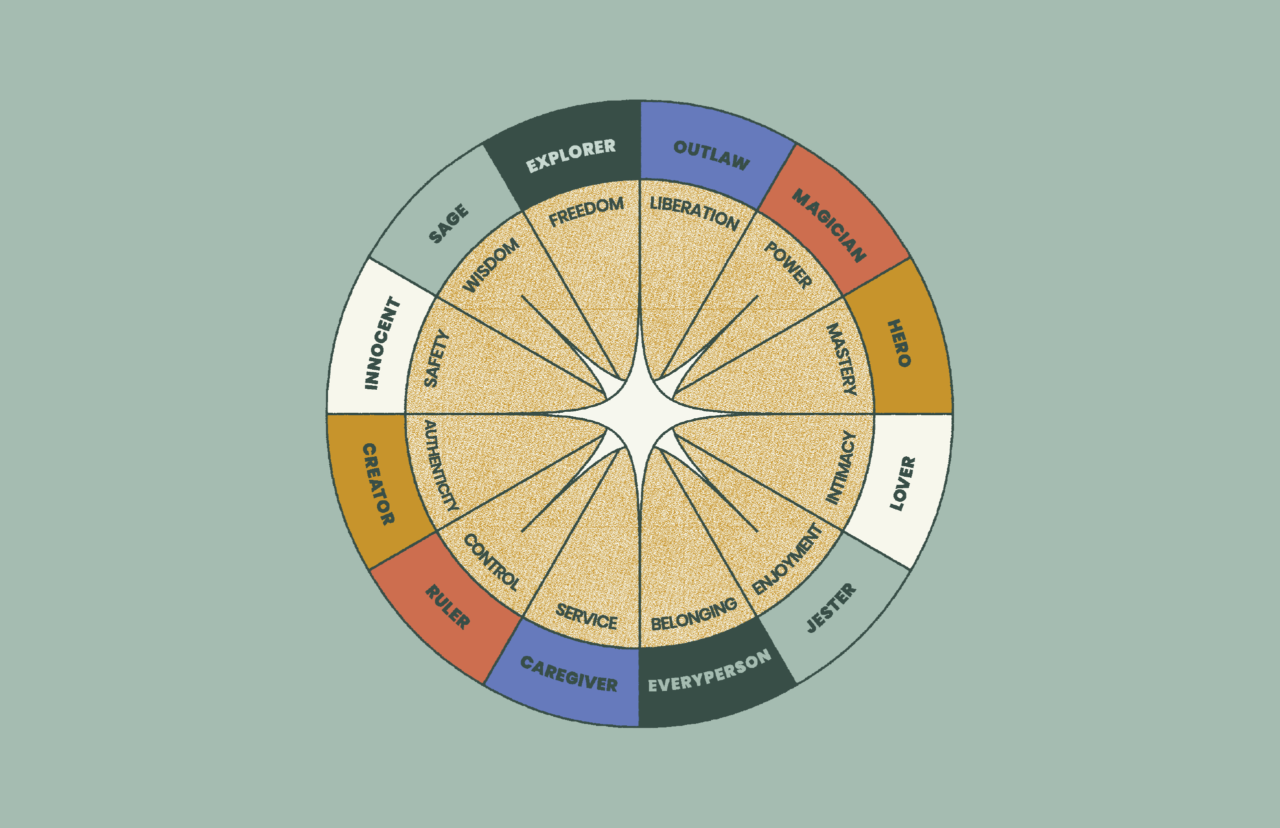“Marketing is about values. It’s a complicated and noisy world, and we’re not going to get a chance to get people to remember much about us. No company is. So we have to be really clear about what we want them to know about us.”
– Steve Jobs
At Murmur we employ what we call an “applied-values” approach to branding. It’s a relatively simple concept (hint: it involves applying organizational values to branding) but requires quite a bit of discipline, keen articulation, and consensus-building to achieve. It also requires a somewhat nuanced understanding of branding itself. So let’s start with that!
What is Branding?
“A brand is the set of expectations, memories, stories, and relationships that, taken together, account for a consumer’s decision to choose one product or service over another.” – Seth Godin, best-selling author, and speaker
An organization’s “brand” is what happens in people’s minds when they encounter your organization in any, way, shape, or form. That can be a good or bad. (Watch out if it tips into the “bad” category!)
“Branding” on the other hand is simply the art of curating that experience. Branding is about creating consistency and working to improve the impression that people have when they interact with your organization.
What is Good Branding?
“Branding is the art of aligning what you want people to think about your company with what people actually do think about your company. And vice-versa.” – Jay Baer, Convince & Convert
Good branding is not beautiful design or witty copy. Sometimes it’s the opposite. Branding is much more about projecting a consistent personality and experience for your audience.
Now “GREAT” branding is about integrity. Integrity is about aligning an organization’s values with its actions. People love integrity because it is safe. It makes the unknown known. It builds trust. Not all “good” branding has integrity. It may be clever or compelling but not necessarily values-aligned.
Integrity in branding is what has allowed Apple to become one of the most successful companies on earth.
What are Organizational Values?
“Company values are the core principles that guide and direct the company and its culture. In essence, your company values are the beliefs, philosophies, and principles that drive your business.” – Tony Hsieh, Zappos
Shared organizational values are the concepts that drive an organization and keep it from falling apart. But this doesn’t men that values don’t change. They do, the trick is adjusting your branding to match.
Values can also be tricky to understand and articulate. Many companies have written values that may not widely resonate or are too generic to actually resonate with anyone. I can’t tell you how many companies list values like:
Trust
Compassion
Integrity
Authenticity
That’s just a list of positive characteristics that everybody wants to have. Companies with these kinds of values are not necessarily value-less. It just means they didn’t know how to articulate their own values in a meaningful way.
Why Organizational Values Are Important
“Values should underpin Vision, which dictates Mission, which determines Strategy, which surfaces Goals that frame Objectives, which in turn drives the Tactics that tell an organization what Resources, Infrastructure and Processes are needed to support a certainty of execution.” – Mike Myatt, CEO Coach, Forbes Columnist, Founder at N2Growth
Organizational values are the bedrock. They are what everything gets built on. This is not to say that every business figures out their organizational values right away. Businesses often grow out of a need. They develop organically and discover their values along the way.
Once you do have a strong set of values, you may be on precipise of some exciting growth. Organizational values are more than just brand assets. They can impact every aspect of your business at every level.
Your values can inform who you hire and fire, what products and services you offer, who you partner with, and how you trezt your customers. Your articulated values are the heart of your organization.
You can see how Patagonia’s commitment to environmental sustainability, a core organizational value, has shaped its approach to manufacturing, marketing, advocacy, and more. This has earned Patagonia immense respect and loyalty among consumers who share these values.
Why Applied-Values Branding Matters
If you want to a grow a business long-term, values and integrity are your most important assets. Secondly, you need to ensure that your audience understands those values and that’s where applied-values branding comes in.
Does that mean applied-values is the only way forward? No. If you are the only business on the block selling sugar water, you don’t necessarily need to curate a brand image or define your values. In fact, you don’t need a very good product either. You just need sugar and water and thirsty people walking by.
Applied-values branding does matter if you want to actively and intentionally grow. It matters if you want to increase profits or earn market share or become the next Coca-Cola.
The Difference Between Opportunity-First and Applied-Values Branding
Opportunity-first branding prioritizes market trends, disruptive strategies, and consumer demand, while values-first branding is rooted in an organization’s core values. It’s kinda like the difference between being yourself or dressing up to get attention. They are both viable strategies, but values-first has a longer shelf-life.
The danger with leaning into opportunity-first, especially as a new brand, is that you won’t be taken seriously in the long term. Some new brands make huge waves, get celebrity endorsements, and become “talk of the town,” but when the story fades, so does the brand.
“Liquid Death” is an example of a beverage brand that has skyrocketed to fame based on clever market positioning. This doesn’t mean they don’t have company values, but perception is mostly rooted in a gimmick. Do you know what Liquid Death cares about besides “Murdering your Thirst?” If Liquid Death wants to persevere once the buzz fades, it will need to become more values-based and that may prove difficult.
In contrast, Red Bull has maintained their allure over time because their brand is grounded in a consistent set of values—extreme sports and high-energy experiences.
Why Values-Based Branding Works Best
“Authentic brands don’t emerge from marketing cubicles or advertising agencies. They emanate from everything the company does…” – Howard Schultz, Starbucks
People love to know what to expect. It relives them of mental burden. Nobody wants to spend 20 minutes trying to find the right shampoo or toothpaste every-time they go to the store. Understanding a brand and its values means you might buy a car, sandwich, and insurance policy all from the same company without thinking twice—because you understand what they value and it aligns with your needs.
Values-based branding resonates with customers because they come to look at your organization as a reliable friend, a helper, or protector. (And yes, this is where brand archetypes come in but we’ll save that for another post).
How to Execute Applied-Values Branding
Well, we would be amiss not to say that this is what we do! So you should drop us a line. But for those who like the DIY approach here’s a quick list:
1. Define hyper-specific values for your organization
Listing your values is great, but articulating them in a succinct way is very important. And remember, you can’t run a company on 36 different values. Nobody will remember them. Try 3-5.
2. Develop and articulate your brand character based on your values
Think of your brand character as your company spokesperson. Who is this persona that embodies your brand? How would you describe them? How do they talk?
3. Develop 3-5 brand pillars based on your values.
We think of brand pillars as short-hand concepts that can be used to implement your values and character in art, design, copy, and more.)
We often use word pairs along with short descriptions. Your brand pillars can be abstract but should also be to any creative working on your brand.
Examples of potential brand pillars: Sophisticatedly indulgent, rough and humble, exuberantly optimistic, mysterious but kind etc.
Useful Tools for Your Applied Values Journey
In addition to hyper-specific values, we find the following tools to be super useful in executing an applied-values approach to branding.
Brand Pillars
Brand Uniques
Mission and Vision Statements
Verbal Identity Guide (Voice & Tone)
Brand Guidelines
Competitive Positioning
Questions? Drop us a line!



